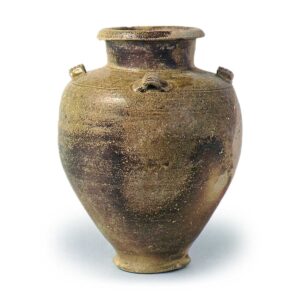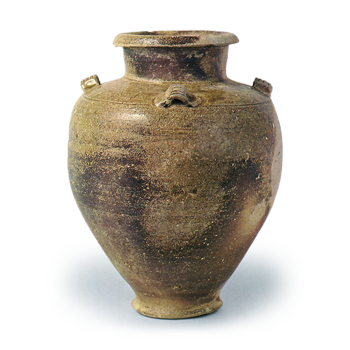
Excavated from Hino Otani Ruins, Hino Town, Gamo-gun, Shiga
14th century
Height 24.0cm, mouth diameter 10.6cm, body diameter 18.4cm, bottom diameter 7.7cm
Hino Town Board of Education
The shape of this jar resembles a Kosedo four-mimi jar from the middle of the Kamakura period (1185-1333), and until its provenance was determined, it was speculated that it came from a kiln in the Seto area. Recently, the remains of a kiln that fired this type of four-mimi jar were discovered high in the mountains behind Inadayama in Kakamigahara City, solving one of the previous problems, as mentioned in the previous article. First of all, it is characterized by the use of coarse clay with iron content, the rolled-up clay molding, the thick neck, and the strong shoulder tension, as well as the fact that it is unglazed and has no design, except for a single chinkaku line.
Some pieces have kiln marks engraved on the shoulders. The natural glaze applied to the shoulder shows a unique color tone of kutuba (decayed leaves), and a brown fire color appears on the body.



